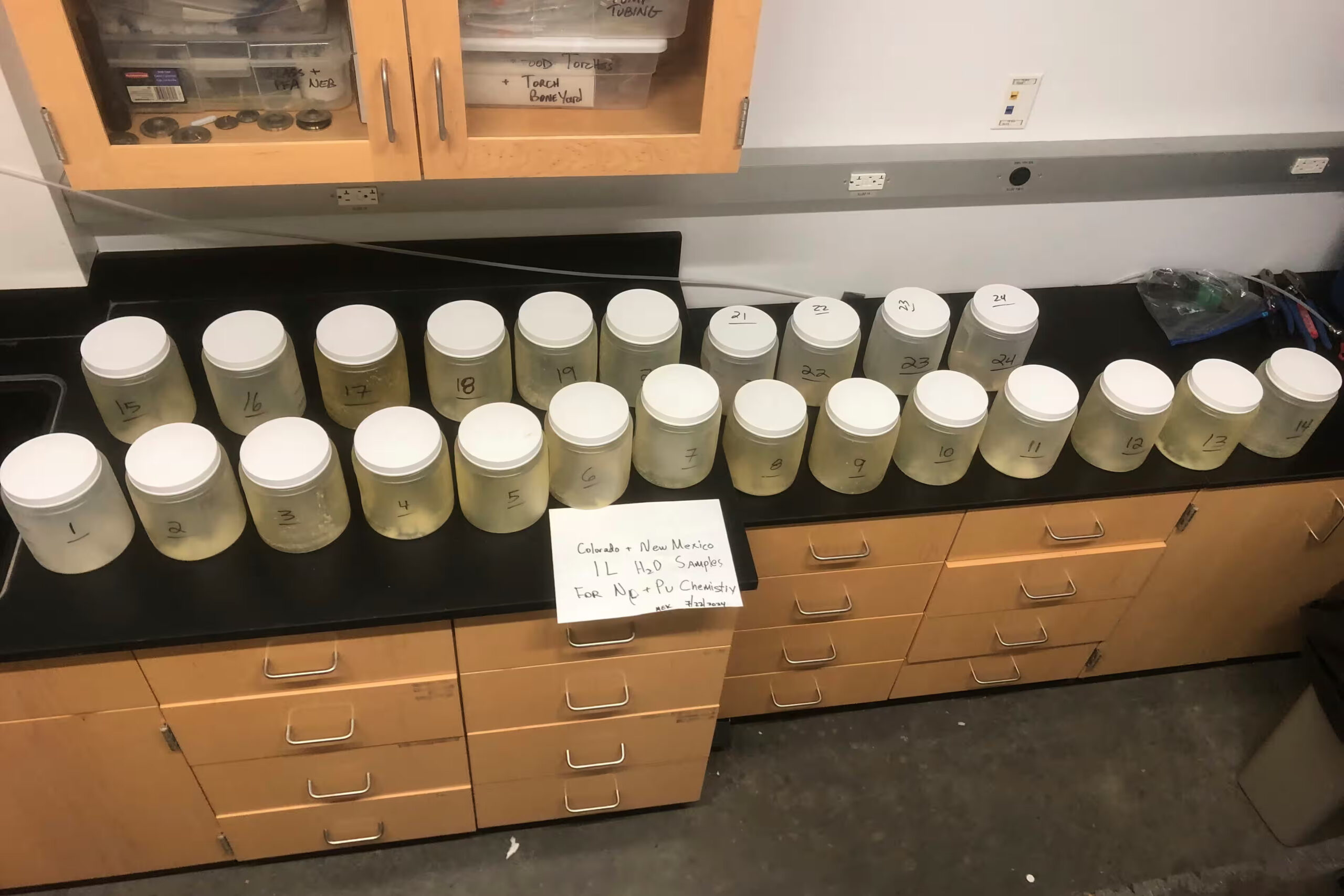Michael Ketterer, a Northern Arizona University scientist and lead researcher on the project, said the plutonium levels in and around New Mexico’s Acid Canyon were among the highest he had ever seen in a publicly accessible area in the US during his decades-long career – comparable to what is found in Ukraine at the site of the Chornobyl nuclear disaster.
The radioactive isotopes are “hiding in plain sight”, Ketterer said.
“This is one of the most shocking things I’ve ever stumbled across in my life,” he said.
The paper comes on the heels of the US Department of Defense announcing it will ramp up production of plutonium pits, a core component of nuclear weapons, at Los Alamos. Meanwhile, the US Senate approved a defense bill with expanded funding for those exposed to the government’s radioactive waste. Local public health advocates say they are outraged by the exclusion of Los Alamos region from the benefits.
Until 1963, Los Alamos National Laboratory spit radioactive waste into a nearby canyon as the Department of Defense developed the nation’s nuclear arsenal. The area became so saturated in toxic waste that it was dubbed Acid Canyon.
Several years later, the Atomic Energy Commission and the US Department of Energy undertook remediation efforts that cost at least $2bn, and by the 1980s brought the area into compliance with federal cleanup standards so that it is safe for use, the government claims.
The commission eventually released the land to Los Alamos county without any restrictions on uses, and it was developed into a dirt trail popular with bikers, hikers and runners.
The exposure level and immediate danger to those using the trails is low despite the high plutonium levels, Ketterer said, but he warned that the environmental risk is still worrying because plutonium can get into water supplies, which ultimately flow into the Rio Grande. The substance can be taken up by plants and enter the food chain, or can be dispersed widely in ash in the event of a wildfire.
Public health advocates also called for the government to post signage warning visitors so they can make an informed decision about using a trail contaminated with toxic waste.
The Department of Energy said in a media statement that the levels were “very low and well within the safe exposure range”.
The research supports recent mapping by the local public health advocacy group Nuclear Watch New Mexico, which used public records to show widespread and alarming levels of plutonium at sample sites throughout the region.
The research is “proof that New Mexico will forever be saddled with a radioactive isotope that has a 24,000-year half-life,” said Tina Córdova, with the Tularosa Basin Downwinders Consortium advocacy group.
“It’s not at all surprising when you contemplate how inefficient the Trinity bomb was and how many pounds of plutonium did not fission,” she added. “What a terrible legacy.”
–
Hang on, how many articles?
It is clear that you get an incredible amount of value from our reporting, all for free. We’d like to humbly suggest that, since you are one of our most engaged and prolific readers, it would only be fair to support us financially in return.
Our open journalism is supported by readers like you. We have no billionaire owner or shareholder – but this is a huge advantage: it means we have the freedom to challenge powerful, influential people and fearlessly chase the truth.
Your support will enhance this work, investing in journalism that’s always free from commercial or political interference. If you can, please support us on a monthly basis. The average monthly support is around $5, but however much you give, all that matters is you’re choosing to support open, independent journalism.
–
Explore more on these topics
Related stories
- –
-
-
















